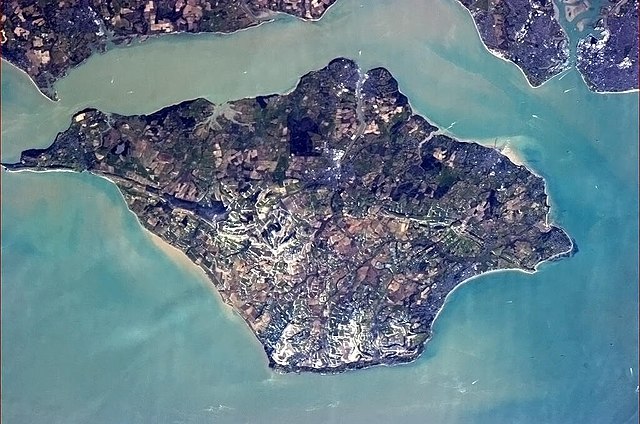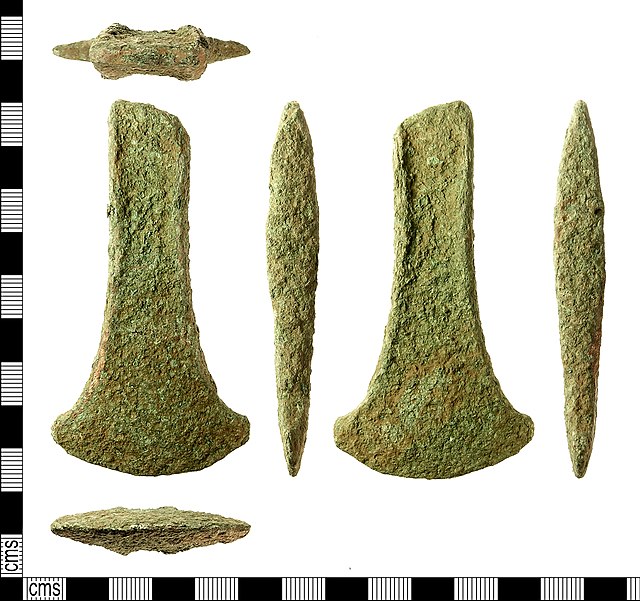Ryde is an English seaside town and civil parish on the north-east coast of the Isle of Wight. The built-up area had a population of 24,096 according to the 2021 Census. Its growth as a seaside resort came after the villages of Upper Ryde and Lower Ryde were merged in the 19th century, as can still be seen in the town's central and seafront architecture. The resort's expansive sands are revealed at low tide. Their width means the regular ferry service to the mainland requires a long listed pier – the fourth longest in the United Kingdom, and the oldest surviving.
Ryde viewed from the Solent
Ryde Town Hall
Hovercraft leaving Ryde
Ryde Pier seen from Ryde
The Isle of Wight is an island, English county and unitary authority in the English Channel, 2 to 5 miles off the coast of Hampshire, across the Solent. It is the largest and second-most populous island in England. Referred to as "The Island" by residents, the Isle of Wight has resorts that have been popular holiday destinations since Victorian times. It is known for its mild climate, coastal scenery, and verdant landscape of fields, downland, and chines. The island is historically part of Hampshire. The island is designated a UNESCO Biosphere Reserve.
An image of the Isle of Wight from the ISS
A flint hand axe from the Paleolithic, c. 500,000 BP, found on the island in 2010.
A Neolithic arrowhead from c. 2500 – c. 2100 BCE, found on the island in 2011
An early Bronze Age axehead from c. 2000 – c. 1700 BCE, found on the island in 2011








